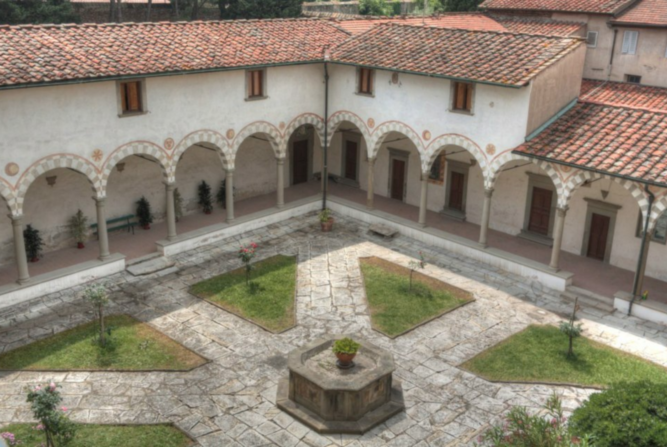FAI’s 2020 Autumn Days: Free Historical Tours

October 17 & 18 and October 24 & 25 offers guests the chance to visit historical and cultural landmarks—including normally inaccessible venues—in Florence thanks to the 2020 edition of FAI Autumn Days. Although admission is free, a visit to open sites during the weekend provides an opportunity to make a donation, large or small, to event organizer, FAI—the Fondo Ambiente Italiano (the Italian equivalent of the National Trust) —a nonprofit organization, which safeguards and promotes Italy’s historic patrimony.
The opportunity to visit the thermal power station at Florence’s Santa Maria Novella train station designed in the early 1930s, reveals the evidence of a system of trolleys and hoppers that operated the coal boilers which fueled the trains in early days.
Further north, in Piazza Savonarola, the Rinaldo Carnielo Gallery, built in the Art Nouveau style, houses an eclectic collection of 300 works by Carnielo (1853-1910) and his contemporaries including Macchiaiolo (Italian Impressionist) painter Silvestro Lega. On the same piazza, stands the Carlo Marchi Foundation, established by the Marchi family with its stated purpose “to spread culture and civic behavior in Italy.” Housed in an elegant villa, the foundation, filled with art works from the 15th-20th century, including the Judgment of Paris attributed to Dello Delli (1403 – 1470).
In Sesto Fiorentino one can stroll the gardens of the Villa Guicciardini Corsi Salviati. One of the most beautiful villas in the Florence area, the gardens, consistently enhanced and transformed since the 16th century, offer a peaceful outing. In a stroll through the vast gardens, the visitor finds fountains, aviaries and a fishpond set among 18th century statuary. The Galileo Museum, located in a factory in Campo Bisenzio, is dedicated to the history of high precision instruments. Visitors can view precursors of modern machinery and objects, from Victorian Age cameras, to radar to theatre binoculars. The museum contains the Galileo Astronomical Pendulum Clock.
Prato invites guests to visit several historic sites in the region. The ancient gardens and cloister of the Convent San Niccolò date to the 10th century. Built in the 14th century as a residence for Dominican nuns, Grand Duke Leopoldo converted the complex into a school for girls in the 18th century. Today the complex, still used for educational purposes, contains classrooms for early childhood through secondary years. The beautiful interior of the church contains ancient frescoes and a colorful marble altar. (rita kungel)
